
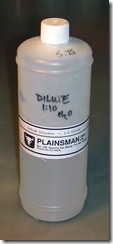 I have been communicating with two European etchers who have been using my copper sulfate mordant for as long as ten years on zinc plates at large print studios. When it came to the disposal of the spent mordant, one group was told by a chemist to add sodium carbonate which would remove the zinc sulfate and/or chloride that had been produced; depending how the mordant was formulated. While this works on etched aluminium, this didn’t make sense to me as zinc carbonate, sulfate and chloride are still soluble in water and not precipitated out. Looking through my 62nd edition of the Handbook of Chemistry and Physics, I found a number of zinc compounds that were insoluble in water, but one of the best chemicals to add would be sodium silicate as solid zinc silicate is quickly precipitated. It is safe to handle and readily available as liquid sodium silicate or powder sodium metasilicate that dissolves readily in water. As an alkali, it would also be effective in removing aluminium hydroxide from mordants using that metal, but cheaper chemicals can be used instead. The viscous sodium silicate might be easier to find at potters suppliers.
I have been communicating with two European etchers who have been using my copper sulfate mordant for as long as ten years on zinc plates at large print studios. When it came to the disposal of the spent mordant, one group was told by a chemist to add sodium carbonate which would remove the zinc sulfate and/or chloride that had been produced; depending how the mordant was formulated. While this works on etched aluminium, this didn’t make sense to me as zinc carbonate, sulfate and chloride are still soluble in water and not precipitated out. Looking through my 62nd edition of the Handbook of Chemistry and Physics, I found a number of zinc compounds that were insoluble in water, but one of the best chemicals to add would be sodium silicate as solid zinc silicate is quickly precipitated. It is safe to handle and readily available as liquid sodium silicate or powder sodium metasilicate that dissolves readily in water. As an alkali, it would also be effective in removing aluminium hydroxide from mordants using that metal, but cheaper chemicals can be used instead. The viscous sodium silicate might be easier to find at potters suppliers.
From comments made on other discussion forums, e-mail inquires - and questions asked at workshops I have given, I feel that many etchers know little chemistry other than what was taught them in printmaking classes on using acids. Hopefully they were told how dangerous acids are at the concentrations used to etch plates. Disposal is properly done when the acid is neutralized with a base before pouring down the drain - yet I had been told about a Canadian etcher who moved from his house every ten years or so, because the metal drainage system was destroyed from nitric acid used in etching copper plates. I trust those days are gone forever.
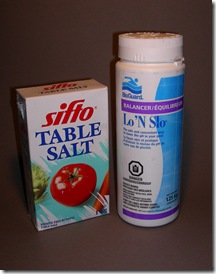
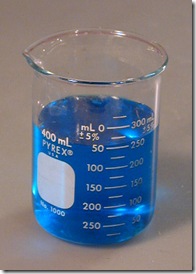 There are a number of ways to mix a copper sulfate mordant with the simplest by just adding water to the crystals. The electro-chemical reaction is slower and gentler and may be preferred by some, but I had found that adding common salt and sodium bisulfate made a much more active bath. These two added chemicals produce weak hydrochloric acid, depending on the amount of the bisulfate in solution. This weak acid also attacks zinc and aluminium, producing small hydrogen bubbles that gently lifts the reduced copper particles from lines and depression on the plate. The bath will now contain fine particles of pure copper, sodium hydrogen sulfate (bisulfate), sodium sulfate, sodium chloride, cupric and/or cuperous chloride; and either aluminium hydroxide or zinc chloride depending on the metal etched - all in different proportions considering on how the mordant was formulated. By using copper sulfate compounds, the etching chemistry is rather complicated when other chemicals get involved in the reaction; as a chemist with a PHD explained to me. Much on etching has already been covered before on this blogsite; only the safe disposal has not been dealt with suitably.
There are a number of ways to mix a copper sulfate mordant with the simplest by just adding water to the crystals. The electro-chemical reaction is slower and gentler and may be preferred by some, but I had found that adding common salt and sodium bisulfate made a much more active bath. These two added chemicals produce weak hydrochloric acid, depending on the amount of the bisulfate in solution. This weak acid also attacks zinc and aluminium, producing small hydrogen bubbles that gently lifts the reduced copper particles from lines and depression on the plate. The bath will now contain fine particles of pure copper, sodium hydrogen sulfate (bisulfate), sodium sulfate, sodium chloride, cupric and/or cuperous chloride; and either aluminium hydroxide or zinc chloride depending on the metal etched - all in different proportions considering on how the mordant was formulated. By using copper sulfate compounds, the etching chemistry is rather complicated when other chemicals get involved in the reaction; as a chemist with a PHD explained to me. Much on etching has already been covered before on this blogsite; only the safe disposal has not been dealt with suitably.
While alkaline solutions are needed to precipitate out the metal compounds, I now believe the most effective is the use of sodium silicate instead of the metasilicate material. Since the straight silicate is clear and only needs to be diluted by a great deal, it doesn’t confuse test results like the impure version of dry sodium metasilicate that I have used. Even if there is no zinc chloride in solution, use of metasilicate still showed a whitish liquid, making it hard to judge the test. Whilst metasilicate is used in commercial cleaning materials, it can be combined with cheaper alkaline chemicals like sodium carbonate and phosphates - as I have found in some products. I know that the purer liquid sodium silicate is clear, so it will give you accurate results. Sodium metasilicate is sold as a phosphate substitute. It is always soluble in water. On the other hand, sodium silicate dries into a insoluble material, so consider spills in your work area. A bottle containing the viscous or diluted material that will keep for years.
Two solutions of silicate. The left side contains sodium metasilicate sold as a cleaning product and may contain other alkaline chemicals. The whitish appearance can make interpreting a test difficult. The right side test tube in diluted sodium silicate that stays clear and can be kept in a closed bottle for years.
A step by step process may be easier to follow.
1. Remove all the remaining copper compound by adding more of the scrap metal that you are using for plates, until the liquid is completely clear and some metal still not dissolved. There will likely be some weak hydrochloric acid still in solution, depending on how the mordant was made up; this can be seen by small bubbles rising from the scraps. Since zinc reacts more with the acid than does aluminium, it is a matter of choice on how much you wish to reduce the acid content before the alkaline solution is added. When using zinc, it is important not to add any alkali other than sodium silicate as those zinc compounds will still stay in solution.
2. Filter out the fine copper particles through a fine cloth or filter paper and dispose into dry garbage; or find someone who wants 100% pure copper in their work.
3. If only aluminium plates are used, adding any base to will precipitate our white aluminium hydroxide. As long as the solution is acidic, aluminium hydroxide is not formed. When the pH goes above 7, the hydroxide is precipitated out. This is one of the chemicals that has been used to clear water in municipal water systems, so should not be a problem for the drains - but probably best to remove the solid material.
4. Filter out the white substance if your municipal system is upset of you putting it down the drain. After we finish a jar of pickles, the liquid containing aluminum potassium sulfate (Alum) is usually poured down the drain.
5. If you are concerned about any aluminium is getting into the sewer system, then use a diluted solution of pure sodium silicate to detect even the smallest amount of the metal.
6. For zinc plates, there will by zinc chloride/sulfate in solution that will not precipitate out with common alkaline materials. This is why very diluted sodium silicate is used, which is added to the filtered liquid before disposal down drains.
7. Dilute your filtered liquid even more to prevent a solid sludge being formed when the silicate is added.
8. Dilute the viscous sodium silicate so it doesn’t produce a harden sludge on entering the filtered liquid. A very diluted solution works for this and final testing as well.
9. Filter out the zinc silicate with a cloth or paper filter, but don’t dispose of the liquid until you test it again with the silicate test solution.
10. Make sure what you are pouring down the drain is clear, indicating there is no zinc compounds.
The filtered out solids can be put into dry garbage containers to be picked up for collection, unless the local government has concerns with metals being disposed this way. Check with your city council.
Why adding sodium carbonate does not remove zinc compounds
The copper particles have been filtered out and only the toxic zinc chloride is present in the solution, along with safer chemicals produced by the reaction. Sodium carbonate had been added to reach 7.7 pH, which produced a white precipitate that settled to the bottom of the beaker. I poured some of the clear liquid into the test tube and added more water. By pouring in diluted sodium silicate, at first there seemed to be little reaction, but after only a couple of minutes, a white precipitate of zinc silicate started to form. This shows that sodium carbonate is not effective in removing the zinc compounds and a silicate should be used.
It really would not take much time to use these procedures to eliminate the last molecule of zinc or aluminium from the used mordant. Reread the earlier articles on using copper sulfate. While this article deals with etching aluminium and zinc, the same process can be used for cupric chloride for etching copper plates. Because that mordant contains much more hydrochloric acid, much more alkaline material is needed. I would suggest using scrap aluminium to remove the acid and all the cupric chloride from the mordant to be discarded. It will give you fine copper particles that can be filtered out, and aluminium hydroxide, which can be precipitated out with cheaper sodium carbonate or borax.
Information on chemicals mention in this article.
| Name | pH | Formula | Solubility | Color and form |
| Aluminium oxide | ? | Al2O3 | Insoluble | White powder |
| Aluminium sulfate | A | Al2(SO4)3 | Soluble | White powder/clear solution |
| Aluminium hydroxide | B | AlO(OH)3 | Insoluble | Insoluble White powder |
| Copper carbonate | B | Cu2CO3 | Insoluble | Yellow powder |
| Copper sulfate | A | CuSO4 | Soluble | Blue crystals/solution |
| Cupric chloride | A | CuCl2 | Soluble | Yellow-brown/green solution |
| Cuprous chloride | A | CuCl(1) | Insoluble | Insoluble Dark green powder |
| Hydrochloric acid | A | HCl | Soluble | Clear solution |
| Sodium bisulfate | A | NaHSO4 | Soluble | White powder/clear solution |
| Sodium carbonate | B | Na2CO3 | Soluble | White powder/clear solution |
| Sodium chloride | A | NaCl | Soluble | White powder/clear solution |
| Sodium metasilicate | B | Na2SiO3 | Soluble | White powder/clear solution |
| Sodium silicate | B | NaO.xSiO2 | Viscous liquid - | dries insoluble/white powder |
| Zinc carbonate | B | ZnCO3 | Insoluble | White powder/clear solution |
| Zinc chloride | A | ZnCl2 | Soluble | White powder/clear solution |
| Zinc metasilicate | B | ZnSiO3 | Soluble | White powder/clear solution |
| Zinc silicate Zinc sulfate |
B A |
2ZnO.Si2.H20 ZnSO4 |
Insoluble Soluble |
White crystals or powder White powder/clear solution |
These are some of the compounds that can result of chemical reaction between them. Not all may not be formed but some will certainly be in the solutions. Solutions can be acidic or basic, depending if they are below or above neutral 7 pH, on a scale of 1 to 14. Those below 7 pH are acidic and those above alkaline. I could not find the pH on all of the compounds and took my best guess.
I am not a chemist but always liked working with materials. So if anyone has questions, I will try to answer them to the best of my knowledge. If a chemist has any dispute with my methods, please contact me as I want to get this right.

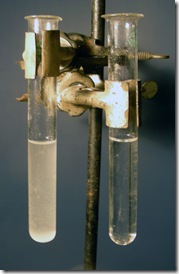
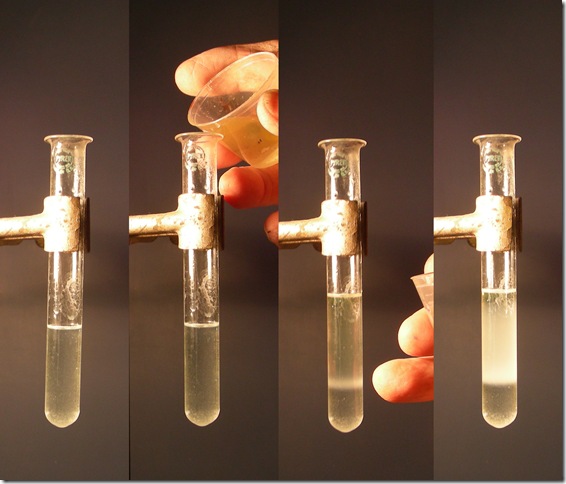
browse around here
Complete Elimination of Metal Compounds from Mordant before Disposal | New Directions in Printmaking
Swinerton Carpentry Services Business
Complete Elimination of Metal Compounds from Mordant before Disposal | New Directions in Printmaking